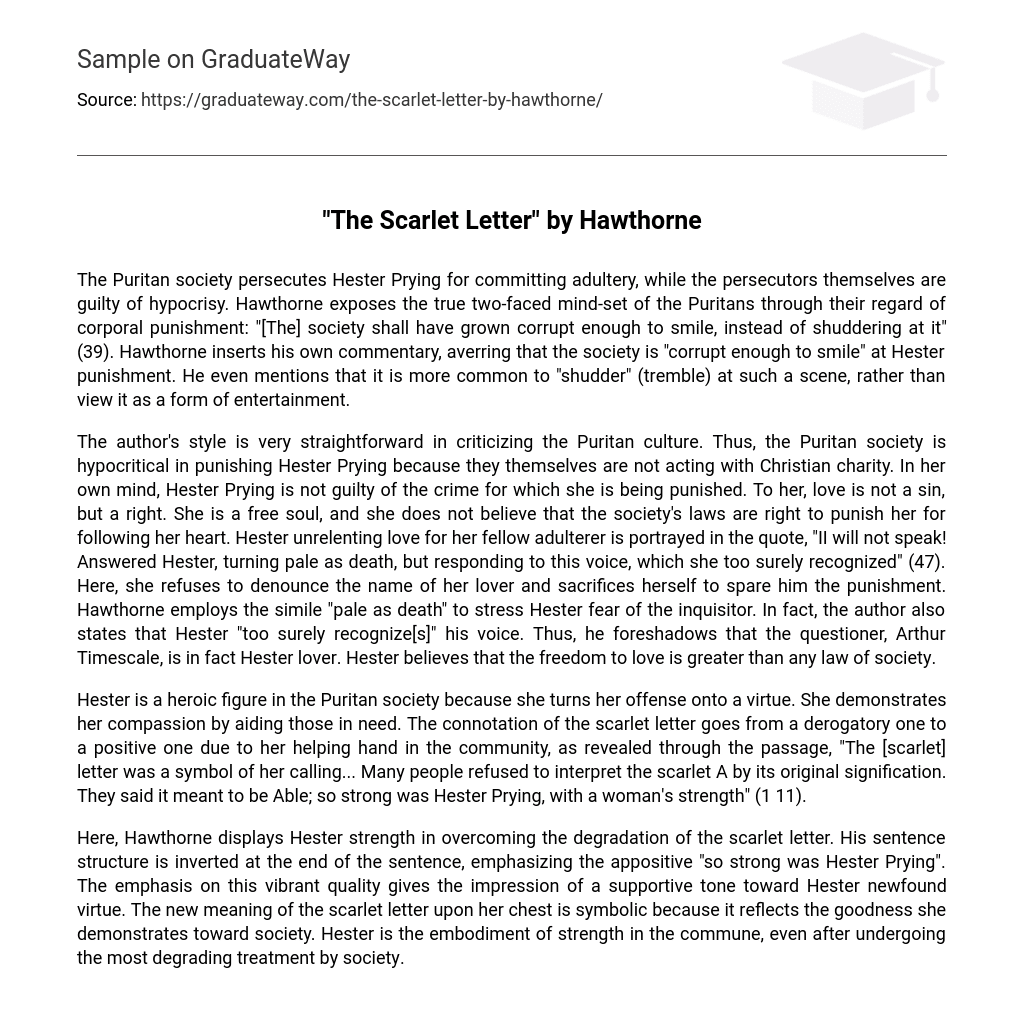The Puritan society persecutes Hester Prying for committing adultery, while the persecutors themselves are guilty of hypocrisy. Hawthorne exposes the true two-faced mind-set of the Puritans through their regard of corporal punishment: “[The] society shall have grown corrupt enough to smile, instead of shuddering at it” (39). Hawthorne inserts his own commentary, averring that the society is “corrupt enough to smile” at Hester punishment. He even mentions that it is more common to “shudder” (tremble) at such a scene, rather than view it as a form of entertainment.
The author’s style is very straightforward in criticizing the Puritan culture. Thus, the Puritan society is hypocritical in punishing Hester Prying because they themselves are not acting with Christian charity. In her own mind, Hester Prying is not guilty of the crime for which she is being punished. To her, love is not a sin, but a right. She is a free soul, and she does not believe that the society’s laws are right to punish her for following her heart. Hester unrelenting love for her fellow adulterer is portrayed in the quote, “II will not speak! Answered Hester, turning pale as death, but responding to this voice, which she too surely recognized” (47). Here, she refuses to denounce the name of her lover and sacrifices herself to spare him the punishment. Hawthorne employs the simile “pale as death” to stress Hester fear of the inquisitor. In fact, the author also states that Hester “too surely recognize[s]” his voice. Thus, he foreshadows that the questioner, Arthur Timescale, is in fact Hester lover. Hester believes that the freedom to love is greater than any law of society.
Hester is a heroic figure in the Puritan society because she turns her offense onto a virtue. She demonstrates her compassion by aiding those in need. The connotation of the scarlet letter goes from a derogatory one to a positive one due to her helping hand in the community, as revealed through the passage, “The [scarlet] letter was a symbol of her calling… Many people refused to interpret the scarlet A by its original signification. They said it meant to be Able; so strong was Hester Prying, with a woman’s strength” (1 11).
Here, Hawthorne displays Hester strength in overcoming the degradation of the scarlet letter. His sentence structure is inverted at the end of the sentence, emphasizing the appositive “so strong was Hester Prying”. The emphasis on this vibrant quality gives the impression of a supportive tone toward Hester newfound virtue. The new meaning of the scarlet letter upon her chest is symbolic because it reflects the goodness she demonstrates toward society. Hester is the embodiment of strength in the commune, even after undergoing the most degrading treatment by society.





